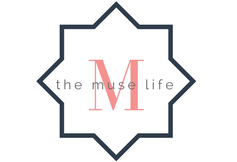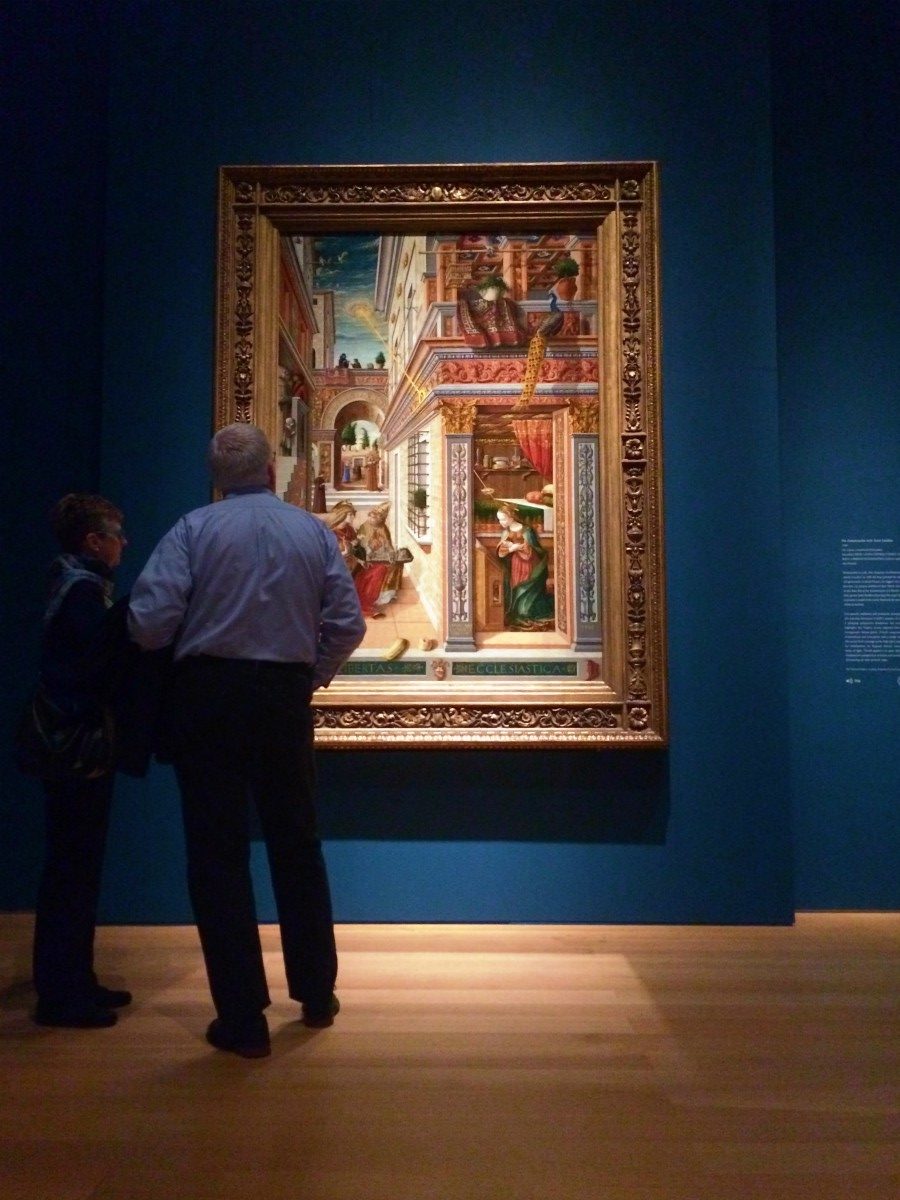My love of Italian Renaissance art culminated in my senior thesis project — a critical look into the art world's decision of who to name a Renaissance 'master' and why we only know these handful of names and cities, rather than the richer, more fully-encompassing picture.
Matching my interests of Italian Renaissance painting, my fascination with the cultural exchange of Eastern Italy and the Byzantine Empire, and the rendition of sumptuous textiles in paint, my thesis mentor spun me towards late 15th century painter, Carlo Crivelli.
Let me paint the framework of what I'm talking about with the western art world's definition of the 'masters' and 'centers' of Renaissance art.
 Virgin and Child with an Angel, Sandro Botticelli (a 'master'), 1470-1474.
Virgin and Child with an Angel, Sandro Botticelli (a 'master'), 1470-1474.
From my thesis:
Renaissance art historical discourse usually focuses on specific “masters,” with precedents set early on by the famous biographer, Giorgio Vasari. No doubt, these artists provide an exemplary first glance into the period because their attention to body composition, perspective, and use of media is so characteristic of the Renaissance. Nevertheless, their works often fail to encompass all indicators of the cultural exchange, political mindset, and artistic identities that were the real revolution of the period.[1] A more complete understanding of the Renaissance can be achieved by including artists who worked in the “peripheral” areas and molded their artistic training into styles wholly unique.[2]
Wow — that's a mouthful.
Basically, as I researched Crivelli and his incredibly unique style I found it odd that I had never heard of him before given how detailed and interesting his artworks are as painted accounts of the time period.
Even if you're not impressed by religious Renaissance painting how can you not find his meticulous attention to detail and beautiful rendering of textiles and incredible architectural designs absolutely fascinating?!
 Crop of the San Giorgio Altarpiece. Credit: National Gallery of Art
Crop of the San Giorgio Altarpiece. Credit: National Gallery of Art
I think it's these kind of over-the-top and seemingly romantic scenes that have made me love this time period of painting — everything was beautiful, perfectly designed, and ostentatious in a way that makes you want to be in that very scene to enjoy the decadent surroundings.
 Detail of Piccolomini Library in the Duomo di Siena.
Detail of Piccolomini Library in the Duomo di Siena.
So, who was this painter you've probably not heard of?
Carlo Crivelli (c.1440-1495) was a Venetian painter who ultimately was exiled as a young man from Venice for adultery.
Then, between his training in Padua and travels to the Dalmatian coast (modern-day Croatia) he cultivated a style that amplified the geographically isolated and politically corrupt province, Le Marche — or The Marches — on Italy's eastern coast where he lived the rest of his adult life.
Take the Annunciation with St. Emidius, 1486.
Credit: National Gallery
Crivelli played with architecture, making it a visual puzzle that disregarded the symmetrical and perfect perspectival Renaissance plan that his contemporaries painted.
Every surface of this painting is meticulously ornamented from rose-coffered ceilings, specific highlighting use of gold leaf on the details of Mary and St. Emidius’ clothing and the exotic peacock’s feathers, to the store of Anatolian carpets that are in such abundance the extras have been draped over balconies.
In this way, Crivelli experimented with how best to represent current political themes and lifestyle through religious imagery that would have been viewed by a large audience, thereby exposing his combination of artistic training and personal brand.
Here too, the artist commented on the political climate of Ascoli with the "Libertas Ecclesiastica" inscription at the bottom of the painting, a reference to the town's long-awaited release from papal rule that was granted in 1482.
And finally, Crivelli's humor is never hard to find in his scenes — directly below the town diorama St. Emidius holds, Crivelli has included a cucumber and apple in trompe l'oeil, inviting the viewer to enter the fictive picture space.
Whether it was an obsession with a vegetable or a more suggestively sexual joke, Crivelli found a way to add a cucumber to many of his works and it has become synonymous with his signature.
Every artist has to have their 'thing,' don't they?!
And Crivelli went beyond trompe l'oeil to lure his viewer in — he also used a pastiglia technique — adding actual bits of plaster to raise elements of the scene off of the surface into real space.
Look at the embroidery of Mary Magdalene's sleeve here — the pattern is actually raised off of the surface, on top of the flat paint.
Can you spot how elements of his works simultaneously echo the Northern European almost grotesque modeling of figures, the vast landscape horizons of Venetian painting, and the anatomically correct and classical characteristics of Florentine art?
St. George Slaying the Dragon, 1470. Isabella Stewart Gardner Museum.
The Dead Christ between the Virgin and St. John the Evangelist, 1475. Credit: Harvard Art Museums
Virgin and Child with a Donor, from the San Giorgio Altarpiece, 1470. Credit: National Gallery of Art
The Dead Christ with the Virgin, St. John, and St. Mary Magdalene, 1485. Museum of Fine Arts, Boston.
There you have it — the one and only Crivelli.
His works will always have a special place in my heart from both knowing that at the time I wrote my thesis I was one of few people around the globe that could be considered an expert on what little there is to find about him, and the fact that his paintings are ornamental and illusionistic in ways that make me want to be in them.
Whether showing off his exotic travels or knowledge of the eastern Mediterranean, making a political statement, combining trompe l'oeil with pastiglia to push his viewer to believing the unbelievable, or signing his work with a suggestive cucumber — Crivelli is the epitome of skilled artistry depicting sumptuous luxury in the cultural mixture that is the Renaissance.
Full dissertation here.
[1] Hans Belting, End of the History of Art? (Chicago: University of Chicago Press, 1987), 67.
[2] Stephen Campbell, “Artistic Geographies,” in The Cambridge companion to the Italian Renaissance, ed. Michael Wyatt, (Cambridge: Cambridge University Press, 2014), 17-39.











